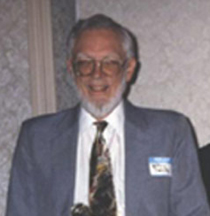William A. Smalley facts for kids
Quick facts for kids
William A. Smalley
|
|
|---|---|
 |
|
| Born | April 4, 1923 |
| Died | December 16, 1997 (aged 74) Hospital of Saint Raphael, New Haven, Connecticut, U.S.
|
| Nationality | American |
| Education |
|
| Known for | Romanized Popular Alphabet |
| Board member of |
|
| Scientific career | |
| Institutions |
|
| Thesis | Outline of Khmu Structure (1956) |
William Allen Smalley (born April 4, 1923 – died December 16, 1997) was an American linguist. A linguist is someone who studies languages. He is famous for helping create the Romanized Popular Alphabet. This writing system helped the Hmong people write their language for the first time.
Contents
The Life of William Smalley
Growing Up and Studying
William A. Smalley was born in 1923 in Jerusalem. His parents were missionaries there. Missionaries are people who travel to other countries to share their religious beliefs. William and his family lived in Jerusalem until 1934. Then, they moved back to the United States.
In 1941, he started college at Houghton College. There, he became interested in anthropology. Anthropology is the study of human societies and cultures. He thought this field would be helpful for missionary work. After graduating in 1945, he studied how to translate the Bible. He also joined a program at Columbia University to study languages.
Working in Vietnam and Laos
In 1950, William Smalley went to southern Vietnam. He worked on understanding different languages there. The next year, he moved to Luang Prabang in Laos. His job was to study the Khmu language and create lessons for other missionaries.
While in Laos, he met Reverend G. Linwood Barney and Father Yves Bertrais. Together, they started working on a writing system for the Hmong language. Before this, the Hmong language had no written form. The system they created is called the Romanized Popular Alphabet (RPA). Today, it is the most common way to write Hmong. A Hmong leader named Yang Dao said that this writing system is "invaluable." He explained that it helped Hmong people keep their culture, traditions, and history alive.
In 1954, a war started in Laos. This forced William and his wife to return to the United States. He finished his studies on the Khmu language. In 1956, he earned his doctorate degree from Columbia University.
Helping with Bible Translations
From 1954, William Smalley worked for the American Bible Society and United Bible Societies. He helped people translate the Bible, mostly in Southeast Asia. He lived in Thailand twice, from 1962 to 1967 and again from 1969 to 1972.
He was also an editor for important journals. He edited Practical Anthropology from 1955 to 1968. He was also an associate editor for The Bible Translator from 1957 to 1959. In 1977, after 23 years, he left these organizations. For a short time, he worked at a toy store.
Teaching and Research in Minnesota
In 1978, William Smalley moved to Saint Paul, Minnesota. He became a Professor of Linguistics at Bethel University. To his surprise, he found that many thousands of Hmong refugees were also settling in the Minneapolis–Saint Paul area. Refugees are people who have been forced to leave their country.
He joined a project at the University of Minnesota. This project studied how Hmong people were adapting to life in the United States. He wrote articles about their language strategies and cultural changes.
He also studied other Hmong writing systems. One of these was the Pahawh Hmong script. This script was created in Laos in 1959 by Shong Lue Yang. William Smalley wrote two books about Pahawh Hmong and its creator. He wrote these books with Chia Koua Vang and Gnia Yee Yang.
From 1983 to 1992, he was an associate editor for Language Sciences. In 1985 and 1986, he lived in Thailand again. He researched the many different languages and dialects there. A dialect is a different form of a language. His book, Linguistic Diversity and National Unity: Language Ecology in Thailand, was published in 1994. It was praised as a great study of how languages relate in Thailand.
William Smalley retired from Bethel University in 1987. But he kept writing many articles and books. He died at age seventy-four from a heart attack.

